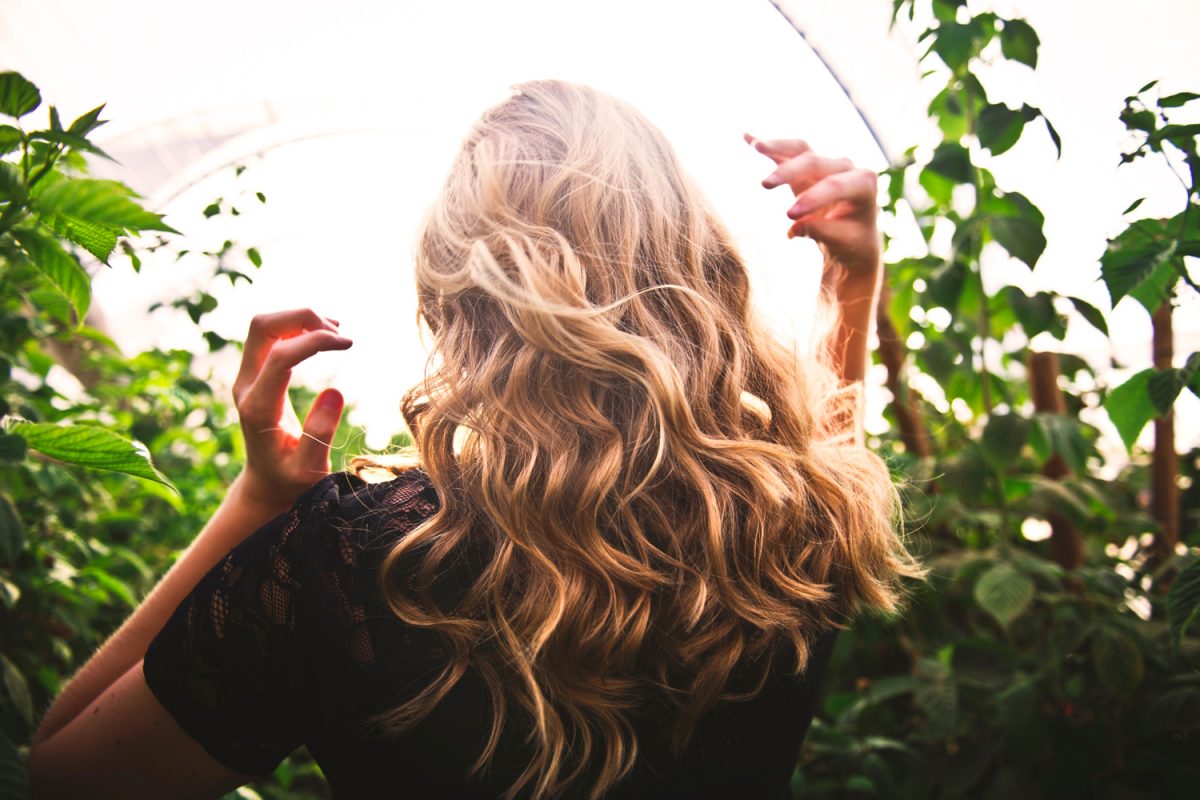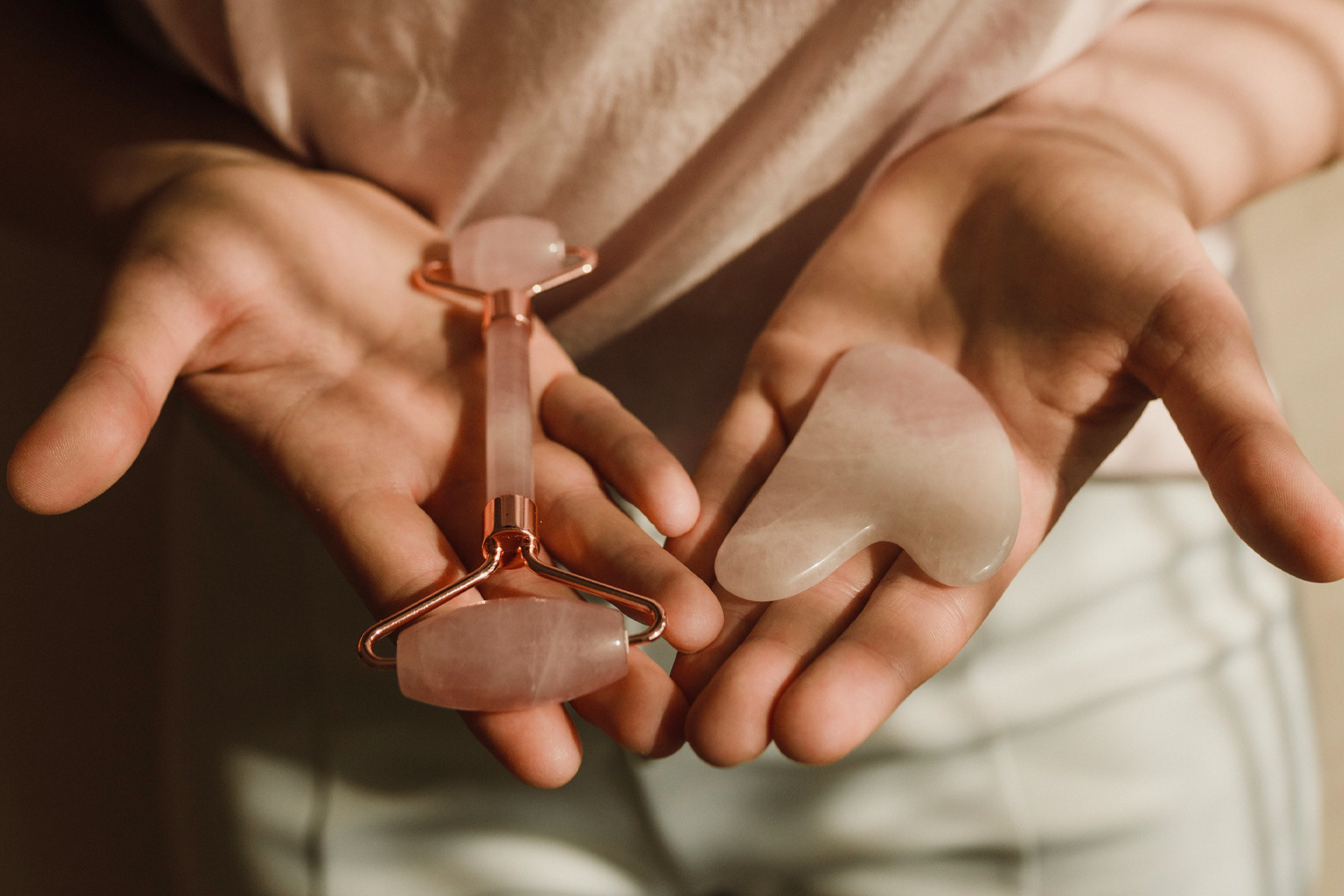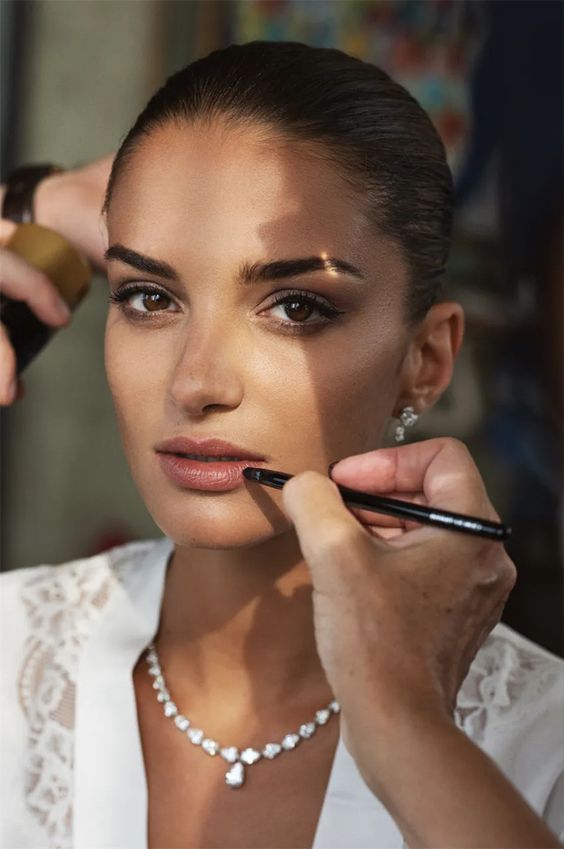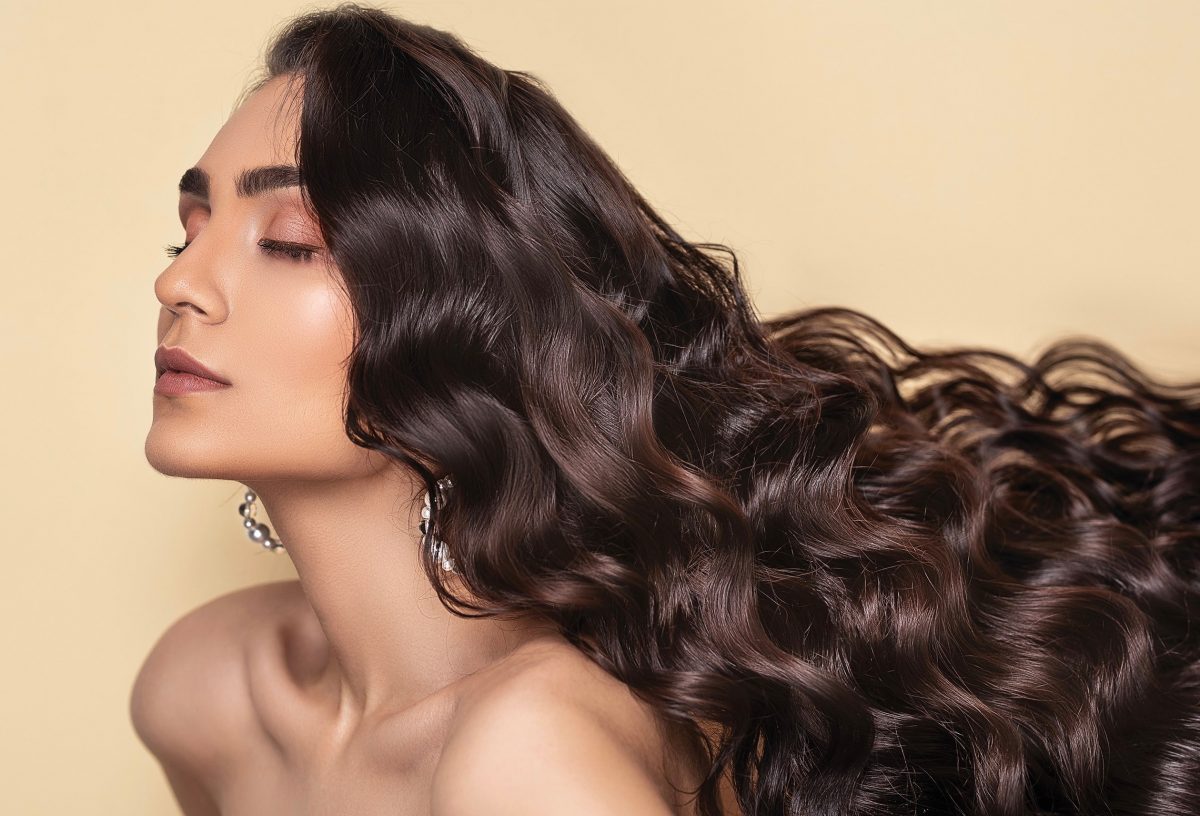
Perché passare al naturale salverà i tuoi cap ricci?
“No, Madame, we don’t treat that kind of hair here.” If you have curly, frizzy, or kinky hair, you may have already encountered this kind of remark at a hairdresser’s.
20% of women have BFC hair in France, but the market offers for this type of hair are poor. Professionals in the industry are not trained to take care of curls. Worse, there are no state-recognized diplomas to treat and style BFC hair.
The lack of knowledge about curly hair in France is very real.
And this phenomenon has repercussions on women.
Like Laureen before, founder of La Belle Boucle, who had the pleasure of answering my questions, many women use a straightener to try to make their curls disappear. Thinking that it is a solution to have a good hairstyle and conform to standards.
Unfortunately, this kind of gesture can harm the curls. Suffocated, damaged, even burned, the hair can really be damaged. Your mane then looks more like a bundle of straw than a vibrant head of hair.
And what if the natural approach was the best way to save your curly hair. Letting them express themselves and giving them back all their power?
That’s what we’ll try to clarify in this article.
With a conclusion to remember right now: using natural methods and products for your curly hair will bring you much more than just a style effect.
Why is curly hair misunderstood?
In talking with Laureen, I quickly understood that the main issue for women with curly hair is not about the appearance, but about the relationship they have with their hair.
Many of them don’t know what type of hair they have. And it’s precisely because they don’t understand their hair that they apply the wrong gestures.
The typical example is the profile of a woman who finds that her hair is neither straight, nor wavy, nor curly. And who, out of a desire for conformity, straightens her hair to achieve a neater result.
The lack of knowledge about the potential of one’s hair is therefore the crux of the problem.
However, the BFC hair type is no more complicated to treat than any other. It has long been labeled as “rebellious” hair. In the collective unconscious, curly hair has never been kind to its owner. But it has never been more difficult to style than any other hair type.
On the other hand, what makes the difference between a beautiful mane like Carrie Bradshaw’s and a frizzy mess can be explained in two points.
Firstly, it is the understanding of one’s hair situation. For this, it is important to make your own diagnosis by asking yourself:
- The texture: wavy, curly, kinky?
- The condition of the hair: dry, normal, oily?
- The hair type: fine, normal, thick?
- The hair porosity: low, medium, high? This refers to the hair’s ability to absorb and retain moisture. Hair with low porosity will have difficulty absorbing care products because the cuticles are too closed. Conversely, hair with high porosity has cuticles that are too open, so the hair will not be well protected.

ly, it is all about the right gestures. When you know little or nothing about your hair, it is common to adopt bad habits. You end up styling the curls instead of helping them form naturally, using chemical products that are not suitable for your scalp, or straightening your hair, thinking it’s the best solution to tame your curls and have a good hairstyle.
Unfortunately, these gestures, which may seem harmless at the time, are the same ones that will harm your hair in the long run, preventing it from being healthy.
Save your curly hair: could the natural approach be the remedy?
Why would the natural approach be more beneficial than a traditional approach to enhance your curls? Why shouldn’t you just shampoo and dry your hair to make your curls as beautiful as they are shiny?
The “classic” care products that are easily found in supermarkets have something that hair (curly or not) does not like: chemical ingredients.
Among the most controversial ones is sulfate. You can find it in most shampoos in supermarkets. It is very effective at cleansing the scalp because it “strips” well, but it is particularly aggressive. In the long run, it creates an imbalance, as Laureen asserts, resulting in an excess of sebum production. The hair then becomes more easily greasy, which leads us to wash it more often. It’s a vicious circle.
Silicone is also responsible for hair damage. At the moment, it allows for easy detangling and softening of the lengths and ends. But in the long run, it weighs down the hair, preventing it from breathing.
Shampoos and hair care products have the advantage of providing immediate satisfaction. But their composition chemically alters the hair, resulting in hair damage in the long term.
To have beautiful curly hair, the traditional approach is not the solution. It is the cause.
On the other hand, the natural approach respects the hair. In the long run, this is what will allow your hair fiber to be in full health. And hair full of vitality is hair that appears strong, well hydrated, and shiny.
The natural approach is also closely linked to the idea of accumulated effect: small intelligent choices that, when applied frequently, will result in massive changes.
This is one of the keys to having beautiful, vibrant curls.
A moisturizing mask every Sunday evening does not have a spectacular effect after one month. But after 2 years? The application of a targeted natural shampoo will give you a feeling of cleanliness in the moment, but after 6 months, it will have contributed to the growth of your hair.
That’s the accumulated effect, the repetition of small gestures (consistent with your goal) that over time, produces unsuspected effects.
What you decide to implement through your actions today (however small they may be, but targeted) will impact your future. Taking care of your curls by repeating regular gestures to wash, care for, and maintain them will pay off in the long run.
The recipe is not miraculous, it lies in the details of everyday life.
And who knows where that will lead you? You may become passionate about curly hair like Laureen. “The more we take care of our hair, the more we notice that it works, and that invites us to continue. It fascinates.”
Taking care of your curls naturally: tips and beauty routine
Now comes the question of how.
How do you proceed to achieve a result that enhances and showcases your curls?
It is first a matter of establishing a routine, as Laureen explains to me. If you are undergoing a natural hair transition to give power back to your curls, it will be very useful. And it consists of 3 steps:
- Step 1: Washing. The goal here is to take care of the scalp. And this is essential because an unhealthy scalp means unhealthy curls. Therefore, choose your shampoo based on your scalp, not your curl type.
- Step 2: Care. Care is always applied to the lengths and ends. Use either a mask (more nourishing) or a conditioner for this. Its mission is to moisturize, nourish, and care for the hair.
- Step 3: Styling. This is the least known step, but perhaps the most important for beautiful curls. It consists of shaping the curl and giving it back its natural shape (without frizz). For this, use leave-in products like creams or gels that you apply to the lengths.
The benefits of this type of routine will depend on the hair base you start with. If you have been used to chemical treatments or straightening, it may take a few weeks. However, if your hair is relatively healthy, you will see the benefits immediately.
In addition, there are some natural tips that can be applied.
Massaging the scalp before shampooing with natural oils will boost the roots and promote faster hair growth.
Using ingredients from your kitchen will serve as the basis for creating many hair recipes. Laureen explains that the kitchen is a goldmine for naturally caring for your hair. “There are many ingredients in the kitchen that can be used to create small recipes. When I started, it was something I did every Sunday.”
For example, honey softens and adds shine to the hair. By mixing it with a little water, you can use it as a mask. As for oat flakes, boil them with water until you get a cream-like texture. This treatment will serve as a conditioner to hydrate your curly hair.
The powers of natural ingredients are therefore unsuspected.
And in a hair transition to have beautiful curly hair, they will clearly be your allies, both in substance and in form. Because if the natural approach is applied with products, gestures, it remains a form of understanding. It is experienced and lived.
From complex to self-acceptance: is there only one step?
The complex of curly hair: an epiphenomenon or a fundamental issue?
Where one might think that the complex is limited to how we perceive our weight or our chest, Laureen proves otherwise, even asserting that hair has a certain impact on self-acceptance.
“It’s not just about hair. It allows you to regain self-confidence, to accept yourself naturally. It’s the starting point for naturally taking care of yourself. It starts with hair, then moves on to skin, body, health, etc.”
The question of curly hair leads us to understand two important things:
The first is that taking care of your curls is like a first step towards what we call natural beauty. Many women start by taking care of their hair before continuing to take care of their skin, body, and even their home with self-made natural cleaning products. The approach becomes generalized, becoming, for some, a true way of life. By becoming aware of the beauty of their true nature, they finally accept themselves as they are and apply this process to other areas of their lives.
💡To do good to your face naturally, discover Facial Yoga, a little-known discipline with many benefits.
The second is that taking care of your curly hair goes much deeper than just an exercise in style. It is a fundamental issue that deeply affects women. For some, it is even a sensitive issue that brings to light years of insecurities and strategies to try to hide what mockery or society conveyed. Laureen confides in me that “people in the salon cry because they are self-conscious, but they also cry with joy because they are happy to discover themselves naturally.” For many, letting their natural hair express itself is therefore a way to rediscover themselves in their entirety. To leave the past behind and finally allow themselves to accept their true nature.
And that makes a big difference in how they perceive themselves and their level of self-confidence.
Going natural is not only beneficial for the health of curly hair, it is also a way to give power back to curly hair. It is an authentic way of understanding oneself and allowing oneself to accept who one truly is.
Save your curly hair: the final word
Healthy hair, shiny, silky, and beautifully defined curls, self-confidence, well-being ritual… The benefits of the natural approach to having beautiful curly hair go far beyond a simple aesthetic effort.
To save your curly hair, going natural is definitely a good idea. And the cherry on top 🍒, it will bring you much more than you can hope for.
➡️ You can follow La Belle Boucle on their Instagram account.
Featured image: © Pexels/Tim Mossholder



